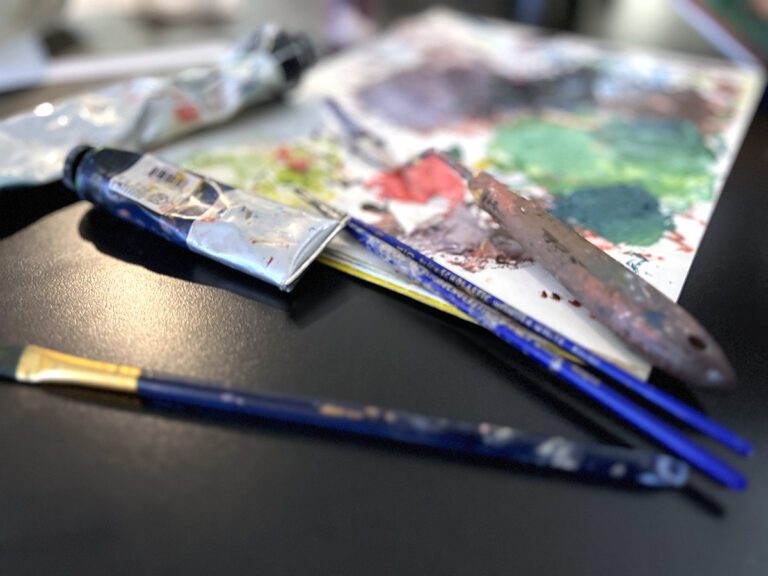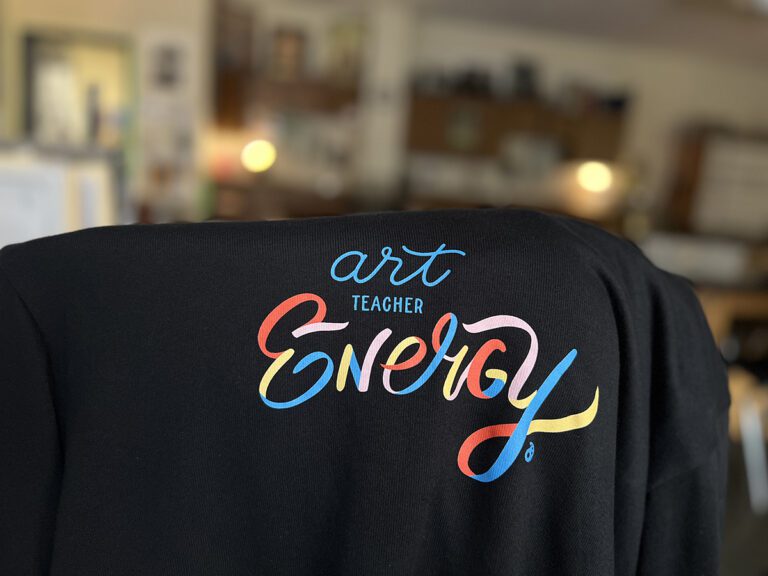Today I am thrilled to welcome Michael Linsin with a guest post today. Michael is the author of the book Dream Class: How To Transform Any Group Of Students Into The Class You’ve Always Wanted, an award-winning book released in June of 2009. He is also the mastermind behind the website and blog Smart Classroom Management. As an author who I respect a great deal, and whose ideas I’ve used to revamp by Classroom Management Plan, I am excited to share an exclusive post that Michael wrote just for AOE viewers regarding management in the art room. Enjoy!
A Classroom Management Strategy Elementary Art Teachers Can’t Live Without
I feel your pain.
Having been a PE teacher for eight years, I know all too well the feeling of being at the mercy of classroom teachers.
The greatest challenge for art, music, and PE teachers and others who see their students less than an hour a week is overcoming the bad habits and misbehaviors learned—or tolerated—in regular education classrooms.
When I first became a PE teacher after many years in the classroom, I was surprised to discover that much of what had worked for me before, when I saw my students every day, didn’t work any longer.
If classroom management was less than effective in the regular classroom, I’d spend most of the hour with my students trying in vane to instill basic listening and attending skills and dealing with startling levels of disrespect.
And then a week later I’d find myself doing it all over again—wasting another class period on behavior and then sugarcoating how the class went when speaking afterward with the classroom teacher. “Oh, your students were fine. No major problems.”
So I went on an Indiana Jones-like quest to discover the simplest strategies that did work, that did influence students in such a way that they behaved for me, even as they were hellions in their own classrooms.
I’d like to share with you one of those strategies, which I’ve found to be among the most effective: Creating Competition.
Despite what regular education teachers may tell you in polite staff-room conversation if you pit them in friendly competition against their grade level colleagues, their pride and desire to win will come roaring out.
You can use this to your advantage by grading each class period on a scale of zero to four, based on how well they behave and follow your directions. You’ll then compile the points earned every week until a winning class is announced and a nominal award is delivered.
By using just this one strategy, the resulting change in behavior can be immediate and drastic.
Here’s how it works.
- Create a point system based on the four whole-class behaviors that are most essential for effectively teaching your class.
For example, you might assign one point for walking into class and sitting down quietly, one point for listening to your directions, one point for following your directions, and one point for lining up quietly to leave the classroom. - After each class period, as your students are leaving your classroom, simply let them and their teacher know how many points they earned that day.
The first class to earn the most points beyond 30—or whatever number you choose—wins the title of the best art class in their grade level. You can award a simple trophy if you wish or a poster they can display on their classroom door. - When the competition is over, start again from zero the very next week.
This gives the classes that didn’t win a chance to earn the award themselves. It also ensures that the contest continues for the entire school year.
It’s a good idea to create a bulletin board that lists, by grade level, each class you accommodate during the week and how many points they’ve earned so far. The students, as well as the teachers, are then able to track their progress and that of their competition.
Accountability
In a small but powerful—and visual—way, the point system holds classroom teachers accountable for how prepared their students are when they show up to your art class. And even if they won’t admit it, they’ll love the competition and enjoy needling their grade-level counterparts.
As for the students, it forces them to be accountable and answerable to each other and to their classroom teacher. And because it gives classroom teachers something their students can rally around, it has the potential to help build community and improve behavior in their own classrooms.
And as for you, it gives you the window you need, the opportunity you crave, to teach and instill in your students a love and appreciation of art.
Everybody wins.
It’s important to note that the point system is meant to improve whole-class behavior and is not a strategy for difficult students or specific incidents of misbehavior. You still need a classroom management plan to hold individual students accountable.
Your points, therefore, should only reflect how the class did as a whole. Never fail to award a point based on the behavior of only one or two students.
Bragging Rights
The beauty of using competition to motivate your students to behave is that, unlike other incentives, it doesn’t weaken over time. You see, it isn’t the award itself students and teachers care about.
It’s bragging rights. It’s being regarded as the best that motivates them to show up at your door ready to learn…
Which means you can depend on the point system strategy working for you as long as you need it.
Magazine articles and podcasts are opinions of professional education contributors and do not necessarily represent the position of the Art of Education University (AOEU) or its academic offerings. Contributors use terms in the way they are most often talked about in the scope of their educational experiences.





